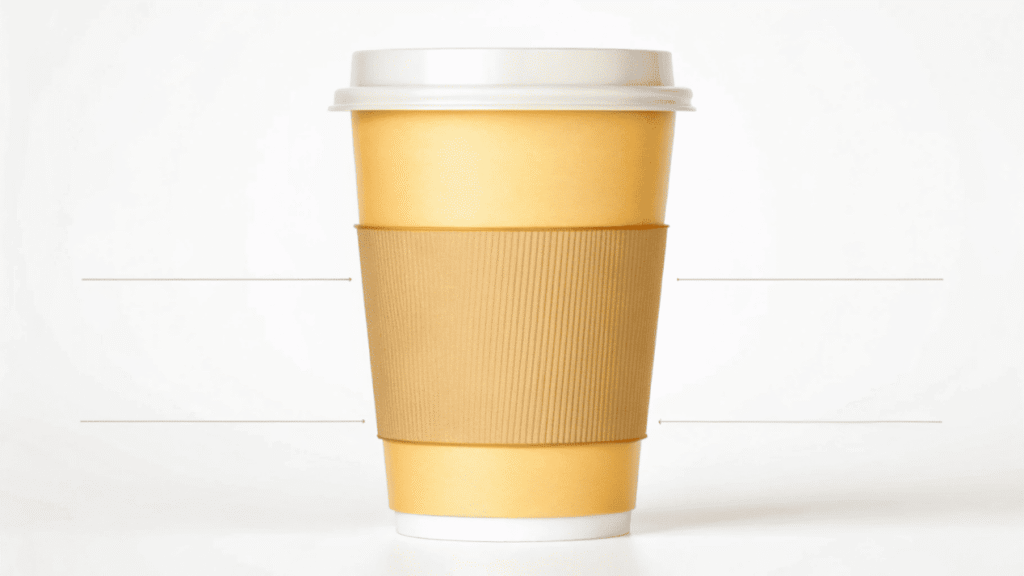You grab a coffee cup every day, but have you ever really thought about what it is? Choosing the wrong one could mean using something unsafe or bad for the planet.
Disposable coffee cups are made of two main parts. The body is high-quality virgin paperboard for strength and hygiene. The inside has a thin, waterproof coating, either traditional plastic (PE) or a compostable, plant-based alternative like PLA.
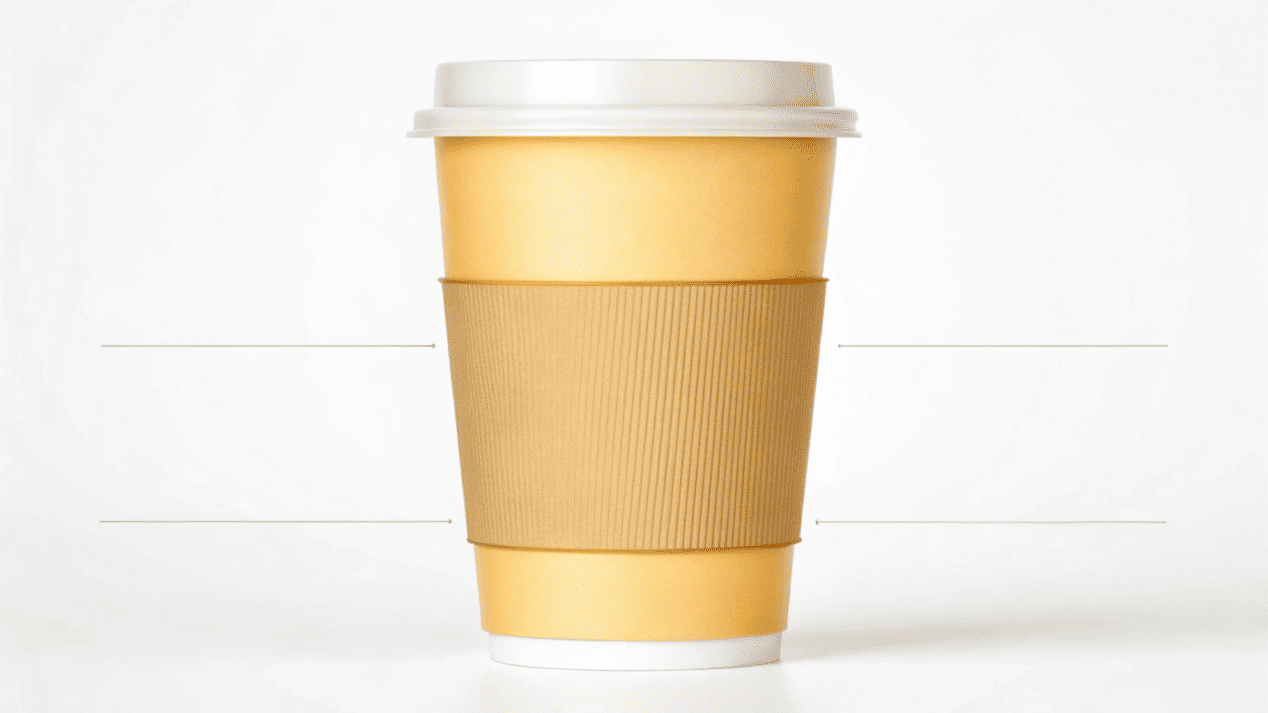
I once had a new client, a cafe owner, who was very passionate about sustainability. He asked me, "Jonh, can't we just use recycled paper for our cups to save trees?" It's a great question, and one I get a lot. I had to explain that when it comes to holding hot coffee safely, we can't take any chances. We need a specific type of material that is pure, strong, and guaranteed to be food-safe. It’s not just about the paper; it’s about a complete system designed to work perfectly from the first sip to the last. Let's look at each part of that system.
What Kind of Paper Is Used for Coffee Cups?
You might think all paper is the same. But using the wrong kind of paper for a coffee cup could lead to a soggy mess or, worse, be unsafe for your customers.
High-quality coffee cups use virgin Solid Bleached Sulfate (SBS) paperboard. "Virgin" means it's made from new wood pulp, ensuring it is sterile and strong enough for hot liquids.
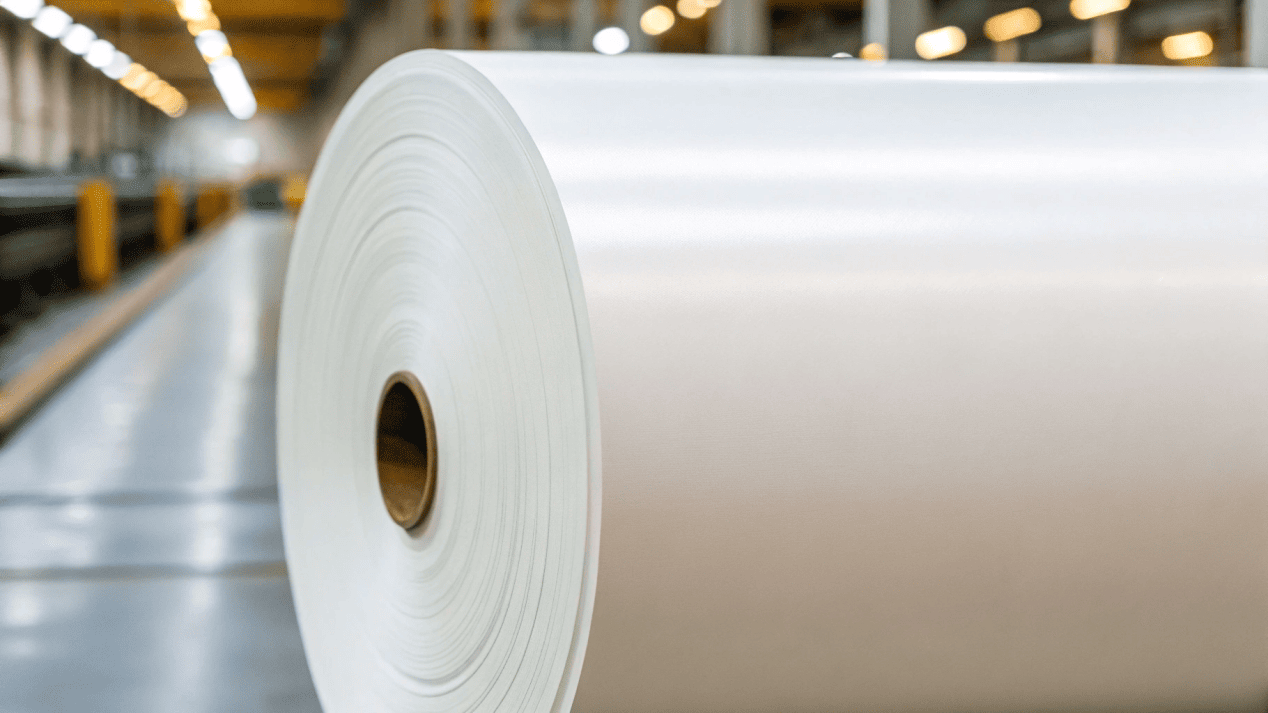
The body of the cup needs to be strong. It has to hold hot liquid without getting soft or collapsing. That's why we use a specific grade of paperboard called Solid Bleached Sulfate, or SBS. This is a premium material made directly from wood pulp. The most important word here is virgin. It means the wood fibers have never been used in another product before. For anything that touches food, especially hot coffee, using virgin fiber is the industry standard. It guarantees the material is completely clean and pure, with no risk of contaminants from a previous life, like inks or glues from recycled paper. The SBS process also creates a paperboard that is very stiff and has a smooth, white surface. This strength is critical for performance, and the smooth surface is perfect for printing vibrant, high-quality brand logos. We measure the paper's weight in grams per square meter (GSM); a higher GSM means a thicker, more durable cup that feels premium in your hand.
What Makes a Paper Cup Waterproof?
Paper absorbs water, which is a big problem for a coffee cup. A cup that leaks or fails can create a huge mess and even cause burns, damaging your brand's reputation.
The secret is a micro-thin, waterproof coating on the inside of the paperboard. The traditional coating is Polyethylene (PE) plastic, while the modern, eco-friendly alternative is Polylactic Acid (PLA).
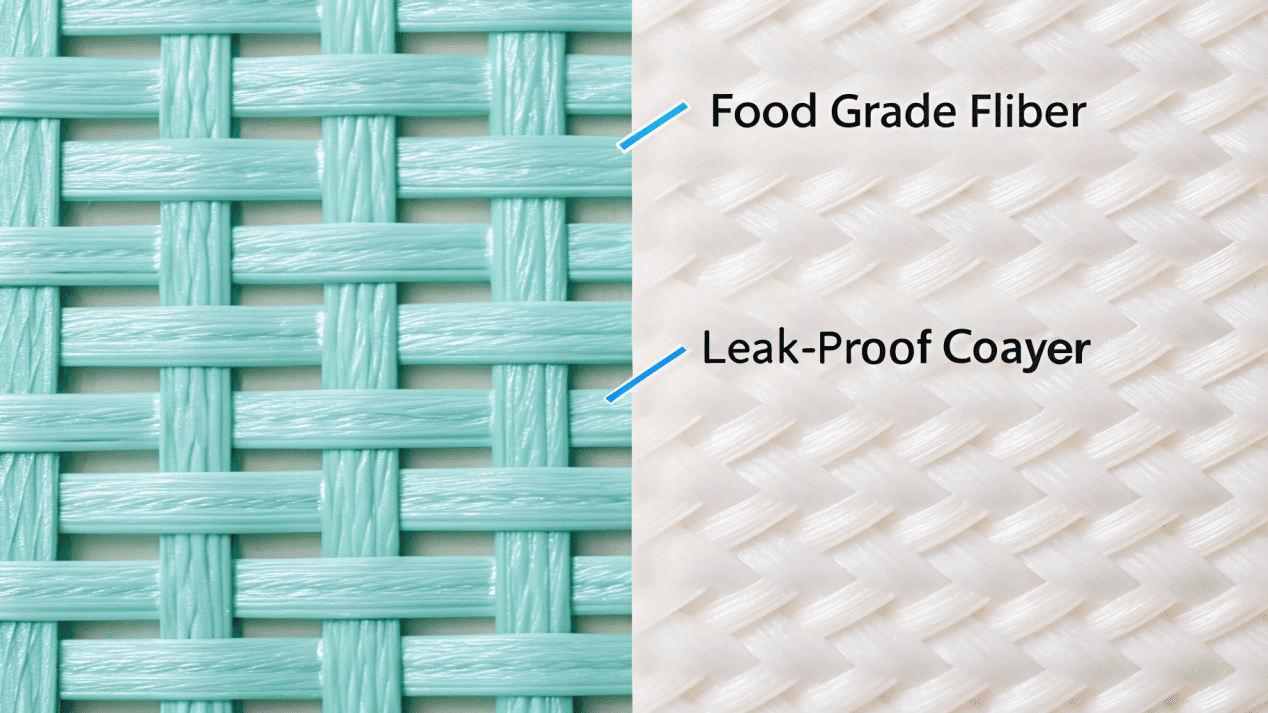
Paper on its own is like a sponge. To make it hold your coffee, we have to add a waterproof barrier. This is the most critical part of a cup's design. For many years, the standard material for this has been Polyethylene (PE). PE is a type of plastic that is melted and bonded in a very thin layer to the inside of the paper. It creates a perfect seal, is completely safe for food, and is very effective at containing hot liquid. It's a time-tested, reliable solution. However, as more people want sustainable options, a new material has become the leading alternative: Polylactic Acid (PLA). PLA is a bioplastic. Instead of being made from petroleum, it is made from renewable plant starches, like corn. It functions just like PE, creating an excellent waterproof barrier. The huge advantage of PLA is its end-of-life. A cup coated with PLA is designed to be commercially compostable. This means it can break down into organic matter in an industrial composting facility, which is much better for the environment.
Coating Quick Facts
| Feature | Polyethylene (PE) | Polylactic Acid (PLA) |
|---|---|---|
| Source | Petroleum | Plant Starch (Renewable) |
| End-of-Life | Landfill | Commercially Compostable |
| Common Use | Traditional Standard | Eco-Friendly Alternative |
Are There Coffee Cups Not Made from Wood?
You want to offer a sustainable cup, but you're concerned about the impact of using trees. This makes you look for innovative materials that are better for the planet.
Yes, there are excellent tree-free alternatives. The most popular are bamboo paper cups, made from the fast-growing bamboo plant, and bagasse cups, made from leftover sugarcane fiber.
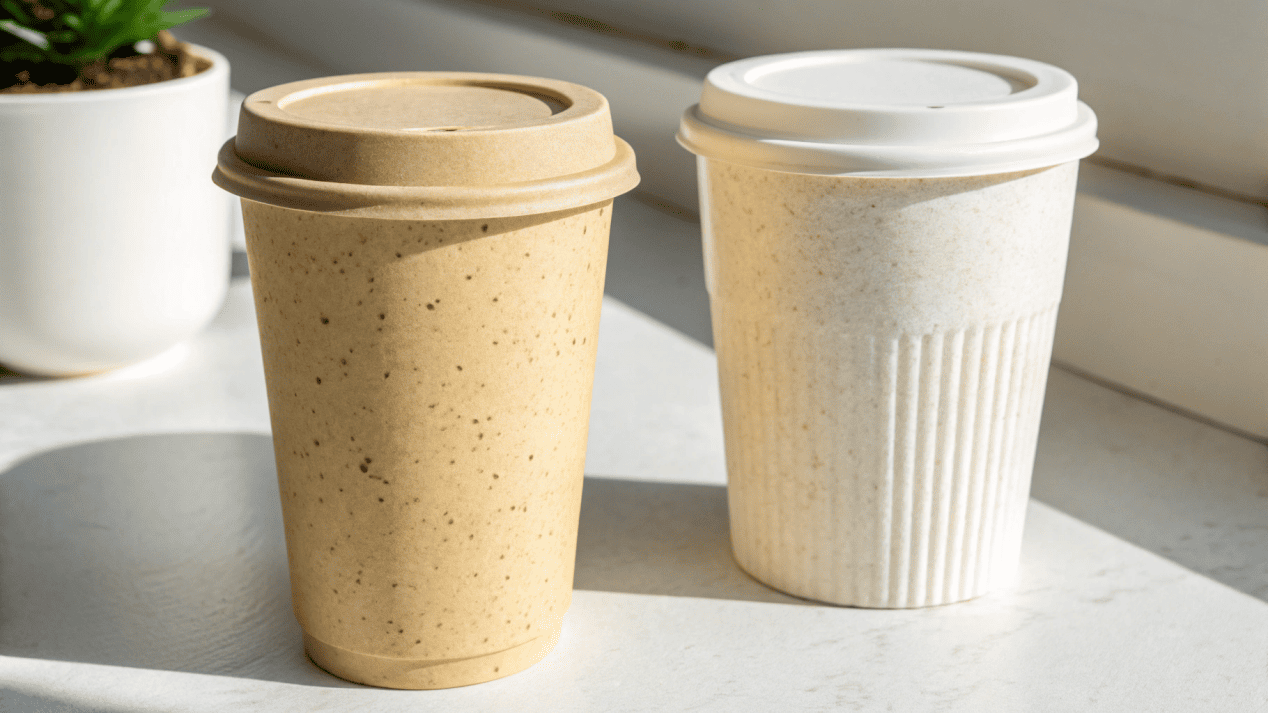
The demand for tree-free products is growing, and the packaging industry has developed some amazing alternatives. I'm seeing more and more clients ask about these. One of the best options is bamboo paper cups. Bamboo is technically a grass, not a tree, and it's one of the fastest-growing plants on Earth. It can grow to full size in just a few months and doesn't require pesticides or fertilizers. The fibers are long and strong, creating a durable paperboard that performs just as well as traditional wood-fiber paper. It's a fantastic, highly renewable resource. Another great tree-free material is bagasse. This is the fibrous pulp that is left over after juice has been extracted from sugarcane stalks. Instead of being thrown away, this waste material is reclaimed and molded into cups. Bagasse is naturally resistant to grease and works well for hot beverages. Both bamboo and bagasse cups offer a powerful story about sustainability and using renewable or reclaimed resources, which really resonates with modern consumers. They provide a high-quality experience without relying on traditional forests.
What Certifications Guarantee a Coffee Cup Is Safe and a Good Choice?
You see words like "eco-friendly" and "safe" on products, but you know this can just be marketing. You need to be sure the cups you buy actually meet high standards.
Certifications are your proof. Look for food safety marks like FDA or LFGB, fiber sourcing certifications like FSC®, and compostability certifications like BPI to verify a cup's quality and claims.
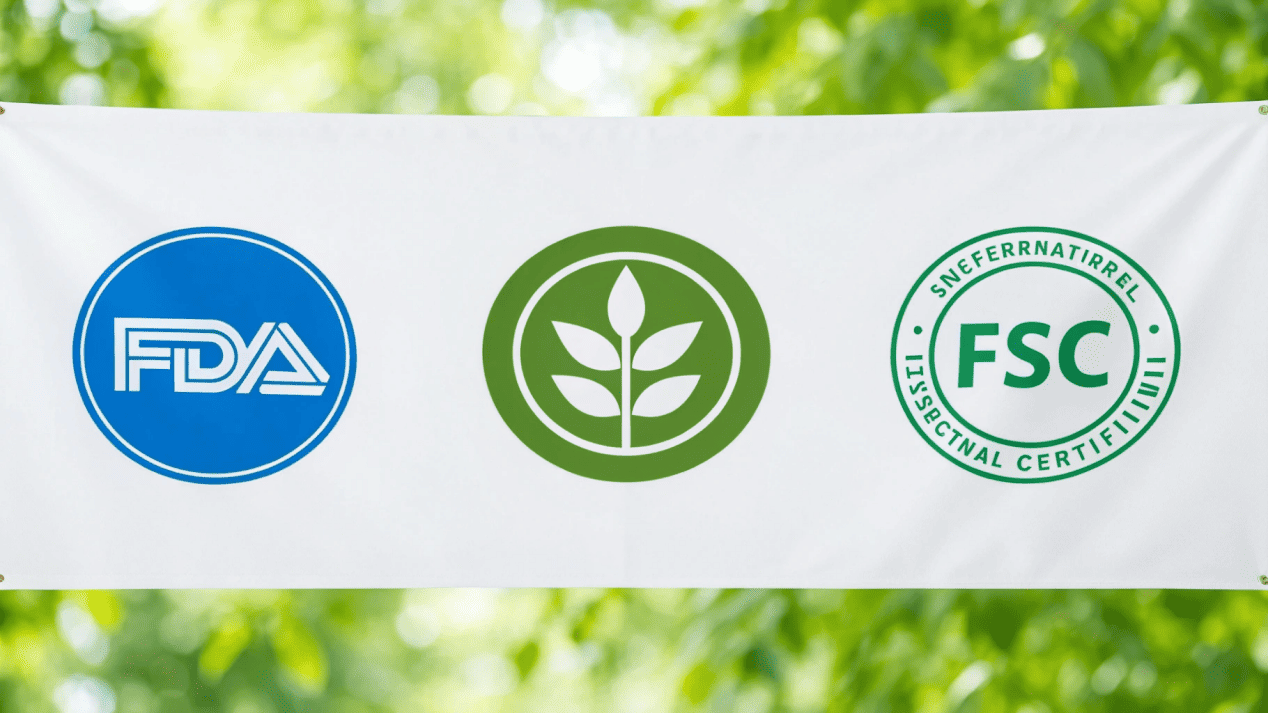
In my industry, trust is built on proof. Third-party certifications are that proof. They are independent verifications that a product is what it claims to be. There are three types you must look for on a coffee cup. First and most important are food safety certifications. In the United States, this is the FDA. In Europe, it's the LFGB. These are non-negotiable. They guarantee that all materials in the cup—the paper, the coating, and even the printing inks—are safe to be in direct contact with your coffee. Second, if you are using a wood-based cup, you need a fiber sourcing certification. The most respected one is the FSC® (Forest Stewardship Council®). This logo guarantees that the wood used to make the paper comes from a forest that is managed responsibly. It's your assurance against deforestation. Finally, if you choose a compostable PLA-coated cup, you need a compostability certification. In North America, the BPI logo is the one to look for. It confirms the cup meets the scientific standard (ASTM D6400) for breaking down safely in a commercial composting facility. These logos aren't just for decoration; they are your guarantee of safety and responsibility.
Conclusion
A disposable coffee cup is a carefully engineered product. It is made from specific materials like virgin paperboard and functional coatings, all verified by essential certifications to ensure safety and quality.
